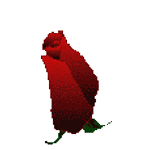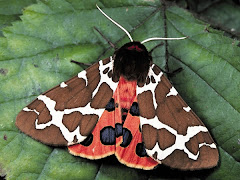Met dank aan Arianne,
Zij wist welke vogel het was in de vorige post!
En nu dus wat meer info over die prachtige Kramsvogel
die ik heb mogen fotograferen!
Many Thanks to Arianne,
She knew what kind of bird I photographed in
the snow
Shown in my yesterday post,
So today, I intruduce you to the Lovely Fieldfare!
(Photo’s are mine, accept the nest)
De kramsvogel (Turdus pilaris) is een zangvogel
uit de familie lijsters (Turdidae). De vogels nestelen
in bomen in parken en loofbossen of op gebouwen.
Ze meten van kop tot staart ongeveer 25 centimeter.
Ze broeden in Scandinavië, het uiterste puntje
van Groenland, Midden en Oost-Europese landen
zoals Duitsland, Polen en Rusland maar ook in
Zuidoost-Frankrijk, Noord-Italië, Slovenië en Kroatië.
In 1967 broedde het eerste paar in België, en
rond 1983 bevonden zich al ruim 10.000 broedparen
in Wallonië en zo'n 500 in Limburg.
De kramsvogel is een schaarse broedvogel, maar
trekt door en verblijft 's winters in Nederland en België
in zeer grote aantallen. Ze komen dan vooral in open
terreinen voor, vaak samen met andere vogels
zoals koperwieken, spreeuwen en kieviten.
Tot 1975 ontbrak de kramsvogel als broedvogel in Nederland.
Tussen 1976 en ca. 1993 kwamen er steeds meer
vogels broeden. Even snel als deze aantallen broedvogels
opkwamen, daalden ze weer.

De kramsvogel is in 2004 als gevoelig op de
Nederlandse rode lijst gezet. De soort staat als bedreigd
op de Vlaamse rode lijst. Volgens SOVON waren er
in 2002 nog 150-200 paar, maar is er sindsdien
geen duidelijke trend vast te stellen.
The Fieldfare (Turdus pilaris) is a member
of the thrush family Turdidae. Its English name, dating
back to at least the eleventh century, is obscure,
though it seems to derive from an Anglo-Saxon
word *feldefare meaning "traveller through the fields",
probably from their constantly moving, foraging habits.
It was described by Linnaeus in his Systema naturae (1758)
under its current scientific name.
It breeds in woodland and scrub in northern Europe
and Asia. It is strongly migratory, with many northern
birds moving south during the winter. It is a very rare
breeder in Great Britain and Ireland, but winters
in large numbers in these countries.

It nests in trees, laying several eggs in a neat nest.
Unusually for a thrush, they often nest in small colonies,
possibly for protection from large crows.
Migrating birds and wintering birds often form
large flocks, often with Redwings.
It is omnivorous, eating a wide range of insects
and earthworms in summer, and berries in winter.
The Fieldfare is 22-27 cm long, with a plain brown
back, white underwings, and grey rump and rear head.
The breast has a reddish wash, and the rest of the
underparts are White. The breast and flanks are
heavily spotted. The sexes are similar,
The male has a simple chattering song,
and a chattering flight and alarm call.







































1 opmerking:
Ik had het kunnen weten,maar dit is wonderful!
I could or should have known this,but this is wonderful!
Beautiful little bird,thank you for sharing it with us!
Greetings from Groningen!
Aleksandra
Een reactie posten